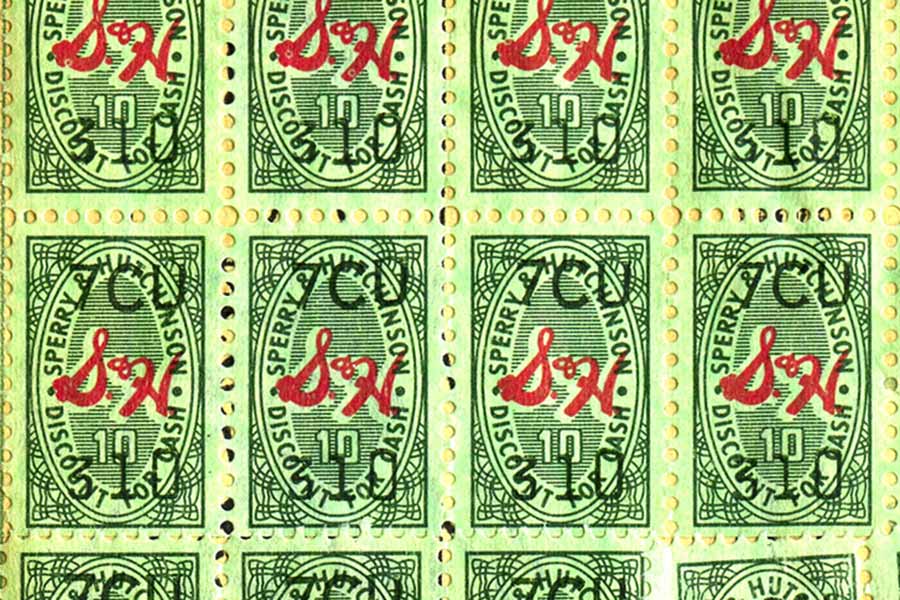By Randal C. Hill
Want an appliance? Some furniture? An elephant? At one time, all were available with enough small paper books filled with trading stamps.
The S & H stamp story began in 1896. Salesman Thomas Sperry noticed that a store he visited was having significant success with a program in which certain customers were rewarded by being given coupons redeemable for goods in that store. Perry thought: why not dispense coupons that were not tied to merchandise from any particular store but could be redeemed anywhere?
With business pal Shelley Hutchinson, the pair launched the Sperry and Hutchinson Company and began selling S & H Green Stamps.
Here’s how things worked: Retailers bought the stamps from S & H, then distributed them—10 stamps for every dollar spent—to appreciative loyal customers as a bonus for making cash purchases rather than by using credit. Customers then pasted the tiny rectangles into booklets handed out by the company visited.
The first S & H Green Stamps redemption center—a “premium parlor”—opened its doors in 1897. Then, as they did later, people would bring in booklets filled with stamps and stroll out later with a shiny new Something, bolstered by the (incorrect) feeling that the item was somehow free.
S & H bought merchandise at wholesale costs and sold it at retail prices when stamps were redeemed. Retailers grumped that buying the stamps cost them about 2% of their sales, although they did hope that the expected increase in business that the stamps could generate would offset the cost of the stamps.
The popularity of trading stamps spread like proverbial wildfire, becoming a part of everyday business at sundry supermarkets, gas stations, drugstores and numerous other outlets.
By the mid-1960s, 83% of America’s 58 million households were saving S & H Green Stamps. (That’s three times more stamps than were issued by the U.S. Postal Service.) Each year, S&H was printing 32 million copies of its merchandise catalog—dubbed the Ideabook—as well as 140 million blank savers books.
The most popular purchased item back then was a toaster. But, over time, changing values and, much to the customers’ delight, the limited list of available options mushroomed to include some, well, “unusual” things, to say the least.
Some companies began issuing their own trading stamps, but were never able to overcome S & H’s dominance.
Then came the 1970s, and food and gasoline prices soared. It became more prudent to seek lower prices: people began to value having extra money in hand more than owning another set of glass tumblers.
The last supermarket to dispense Green Stamps was a Tennessee Piggly Wiggly store in 1999.
Trading stamps have now been replaced by reward programs and discount coupons. In the Green Stamp’s heyday, though, such exotica as donkeys, gorillas, and elephants were sometimes made available when zoo groups pooled enough filled books.
Offered but probably never purchased: an eight-passenger Cessna airplane.
Hmm. One must wonder just how many Ideabooks were needed for that? MSN










